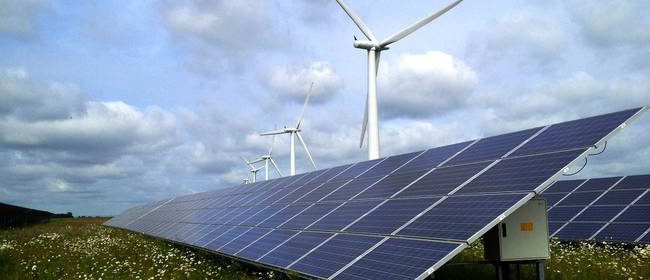RENEWABLE ENERGY FORECASTING: WIND ENERGY AND SOLAR ENERGY

How might extremely accurate wind energy forecasting and solar energy forecasting help us use enough renewable energy to reach climate goals of significantly reducing carbon dioxide emissions? How might help us accurate renewable energy forecasting? Researchers at NREL’s new Energy Systems Integration Facility have the answer to how this renewable energy forecasting can help us.

NREL start by looking at how well wind and solar power can offset each other. To what extent can wind blowing at night make up for the lack of sunshine? They are also looking at how to couple wind energy forecasting and solar energy forecasting with smart dishwashers, water heaters, solar-panel inverters, water treatment plants, and electric-car chargers, not only to accommodate shifts in the wind but to ride out inevitable windless periods and weeks of cloudy weather without resorting to fossil fuels.
Take the example of electric cars. A car stores enough electricity to power a house for anywhere from half a day to several days, depending on the size of the battery pack. And it has sophisticated power electronics that can control the timing and vary the rate of charging, which could offer a way to match fluctuating wind power to electricity demand. With small modifications, the cars’ batteries can deliver stored power to a home and to the power grid. There aren’t many electric cars now, but that could easily change in the decades it will take before renewable energy makes up more than 30 or 40 percent of the electricity supply (wind supplies 4 percent now, and solar less than 1 percent).

At NREL, researchers can plug 30 electric cars into docks that let them interface with power-grid simulations on a supercomputer, to project what would happen if thousands of cars were connected to the grid. The idea is that electric cars might store power from solar panels and use it to power neighborhoods when electricity demand peaks in the evening, and then recharge their batteries using wind power in the early morning hours.
Forecasts like the ones being developed at NCAR (National Center for Atmospheric Research, Boulder) will be “absolutely critical,” says Bri-Mathias Hodge, a senior research engineer at NREL. They will help determine when the cars’ batteries should charge to maximize the electricity they make available to the grid without leaving drivers short of the power they need.

Even before that becomes a reality, though, forecasts from NCAR are already having a big effect. Last year, on a windy weekend when power demand was low, Xcel Energy, which supplies much of Colorado’s power, set a record: during one hour, 60 percent of its electricity for Colorado was coming from the wind. “That kind of wind penetration would have given dispatchers a heart attack a few years ago,” says Drake Bartlett, who heads renewable-energy integration for Xcel. Back then, he notes, they wouldn’t have known whether they might suddenly lose all that power. “Now we’re taking it in stride,” he says. “And that record is going to fall.”
